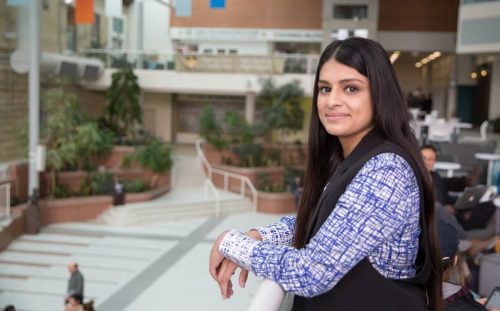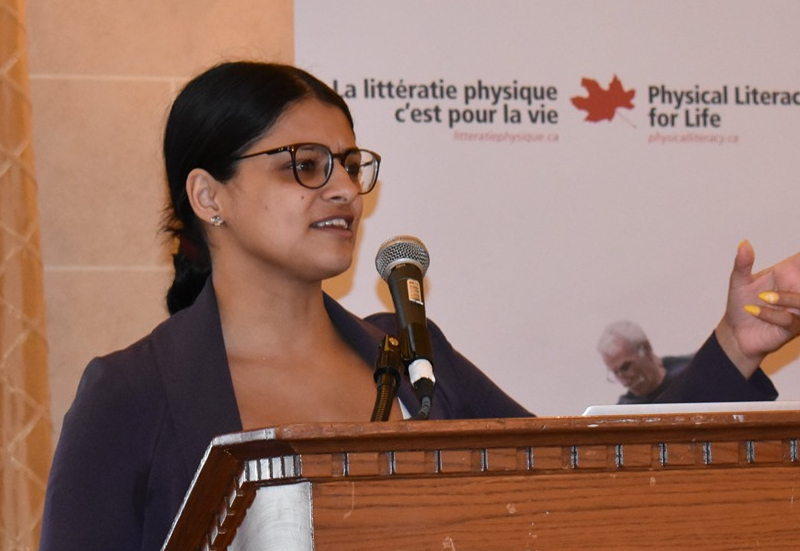How do we ensure newcomer girls are engaged in sport and physical literacy?
 When University of Manitoba researcher Simrit Deol first set out to investigate the barriers newcomer girls face when engaging with sport and physical literacy in Canada, there’s a particular phrase her subjects used to describe the status quo: “the same thing, the same machine”. Many of them faced both societal and personal barriers, and most reported struggling to make new friends.
When University of Manitoba researcher Simrit Deol first set out to investigate the barriers newcomer girls face when engaging with sport and physical literacy in Canada, there’s a particular phrase her subjects used to describe the status quo: “the same thing, the same machine”. Many of them faced both societal and personal barriers, and most reported struggling to make new friends.
“The girls reported finding it difficult to find environments and safer spaces in which they could enjoy physical activity. Specifically, they felt that westernized versions of working out and exercise were not desired forms of activity, but they also felt those were the only public spheres available to them,” Deol told Sport for Life.
Deol was one of the presenters at Sport for Life’s 2019 International Physical Literacy Conference this year, and shared with delegates the results of her research at the University of Manitoba into the best ways to engage newcomer girls. One of the primary things they expressed was the importance of finding a friend following migration, saying it was a significant social support that would help them with social integration. They reported feeling isolated, excluded and misunderstood.
“The girls also discussed their opportunities to engage in physical activity outside of the schooling context, where they felt they had more choices to engage in an assortment of activities. The participants really valued parental influences as a needed support system, providing girls with role models and encouragers and supporters.”
Deol was surprised to hear the girls talk about gender-exclusive physical education classes, referring to them as “female fitness”. They were enthusiastic about this opportunity, because it gave them an opportunity to dress and move free from the gaze of boys and men. However, they also felt it was too “workout-based”, devoid of socialization and fun. They valued how the activity might transform their appearance, but didn’t specifically find it to be an enjoyable form of being active.
“Gender exclusive physical education classrooms may be valued amongst girls for being all-female, but they require more than that. We need to move towards increasing the intrinsic motivation of young girls to engage in physical activity by providing spaces that foster choices and autonomy, and engagement with friends and companions,” she said.
Deol has worked with immigrant and refugee populations in both Winnipeg and Chicago, experiences that helped shape her research interests. Though she wasn’t an immigrant herself, she found that because she was a second-generation Pujabi-Canadian female of similar age, she felt she could relate to them. She dedicated all her work to her mother, Palwinder Kaur Deol, who migrated to Canada from India in the mid-1980s.
“Previous literature has addressed the female experience with sport, recreation and physical activity, and specifically we are aware of the many barriers and facilitators that help to either support or discourage young girls from being active. My research looked to fill a gap that exists with the current research, where the immigrant girl narrative is often left on the margins of the conversation.”
Deol feels an understanding of the intersectionality of female newcomers is key to engaging newcomer youth, and the reasons they might feel excluded from sport and physical activity.
“While it has been shown that there is a connection between immigrant youth and Canadian born youth facing similar challenges of identity development, immigrant youth also have to face the unique set of challenges that occur due to resettlement, adaptation, pressures of assimilation and integration into their new society, and these unique circumstances deserve attention,” she said.
“By utilizing intersectionality, we can acknowledge and understand the complexity of overlapping identities and the ways in which that affects immigrant girl experiences within the larger social structures, like health and education, and this creates advancement within research to expose structures of inequalities and positively influence health initiatives in the right direction.”
Since Canada has one of the highest proportions of new immigrants to total residents in the world, it has been praised for having the willingness to accept these populations. But unfortunately, physical and mental health declines can occur within as little as two years of their arrival. Deol believes physical activity experiences are a “beautiful avenue” to guide them down.
Sport for Life director Andrea Carey was wowed by Deol’s presentation at IPLC, and applauded her work on fostering inclusion. That’s the topic she’ll be presenting at during this year’s first ever IPLC Europe, which is being held in Sweden, and one that will become increasingly relevant in the years to come.
“As our keynote Catherine Carty put it: we can’t move forward together if we leave anyone behind. The work that Simrit has been doing with newcomer girls will help us to understand the nuances of how to best support these incredibly important members of our society and welcome them to our communities going forward.”

